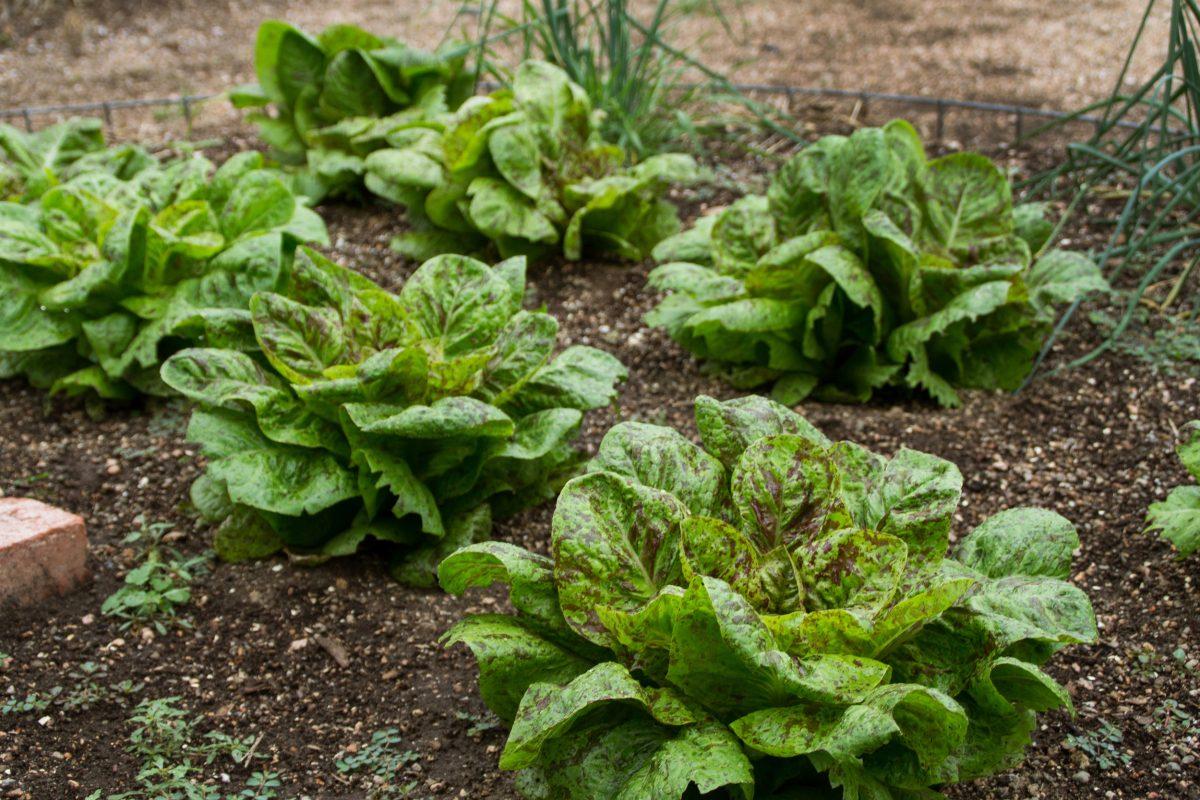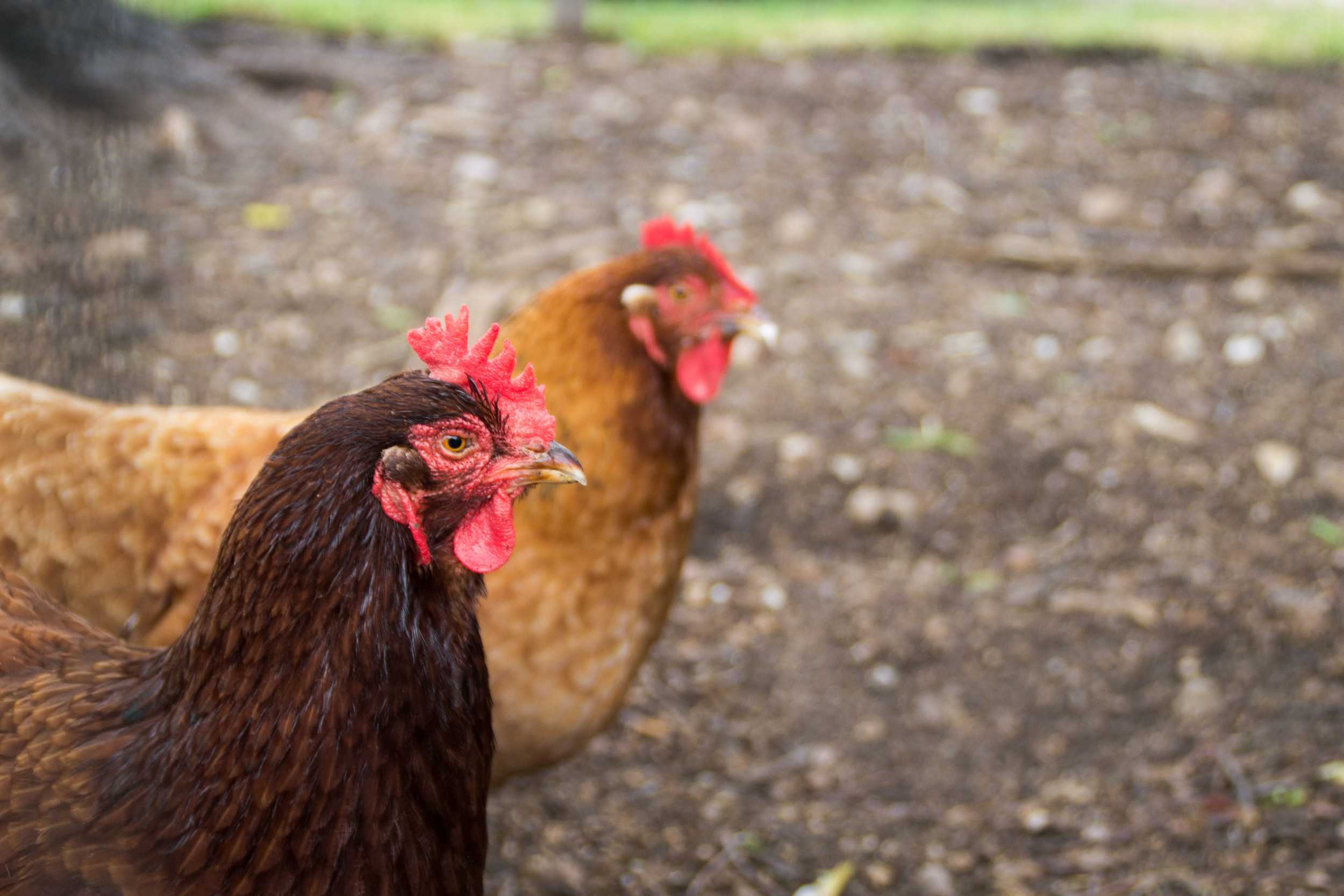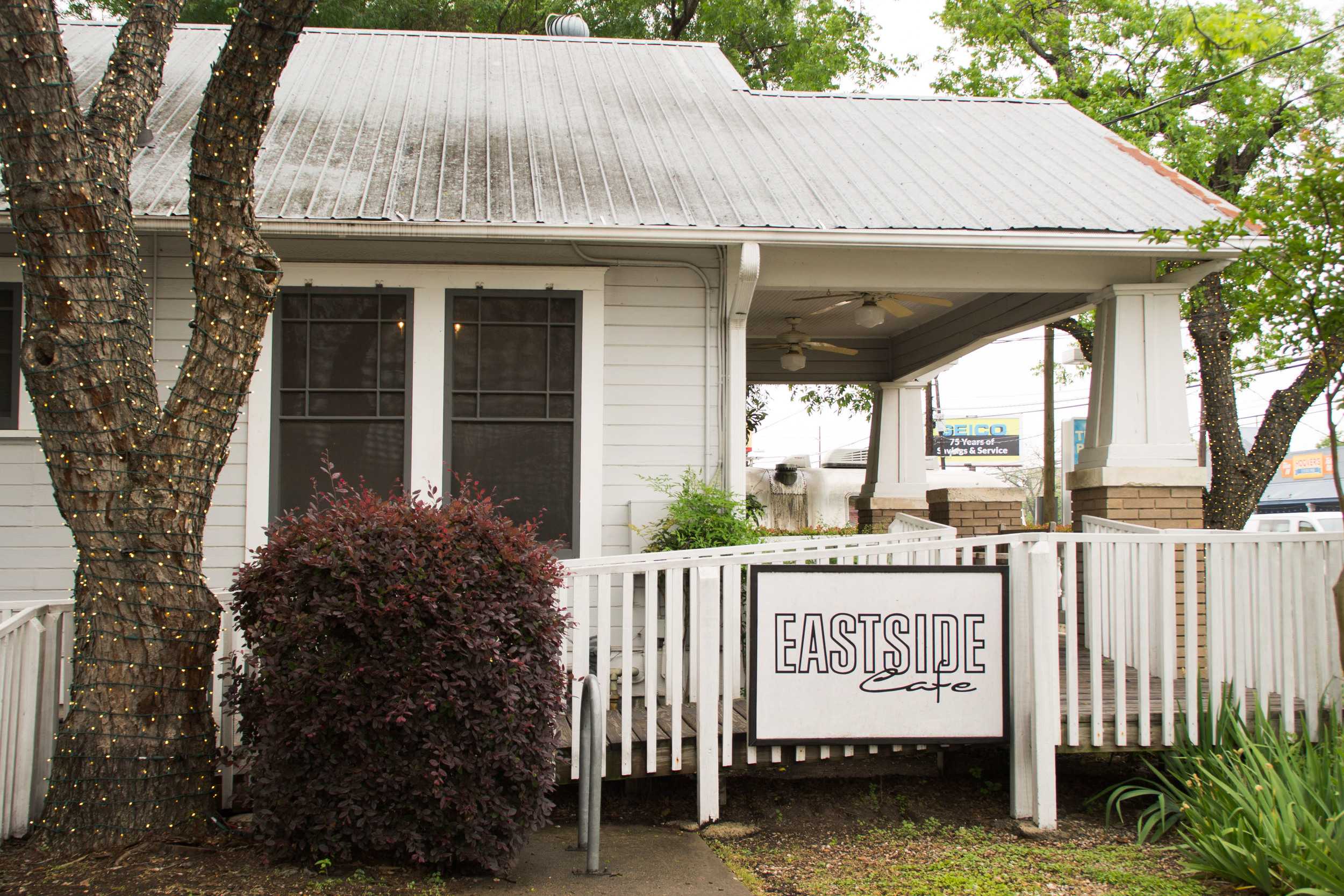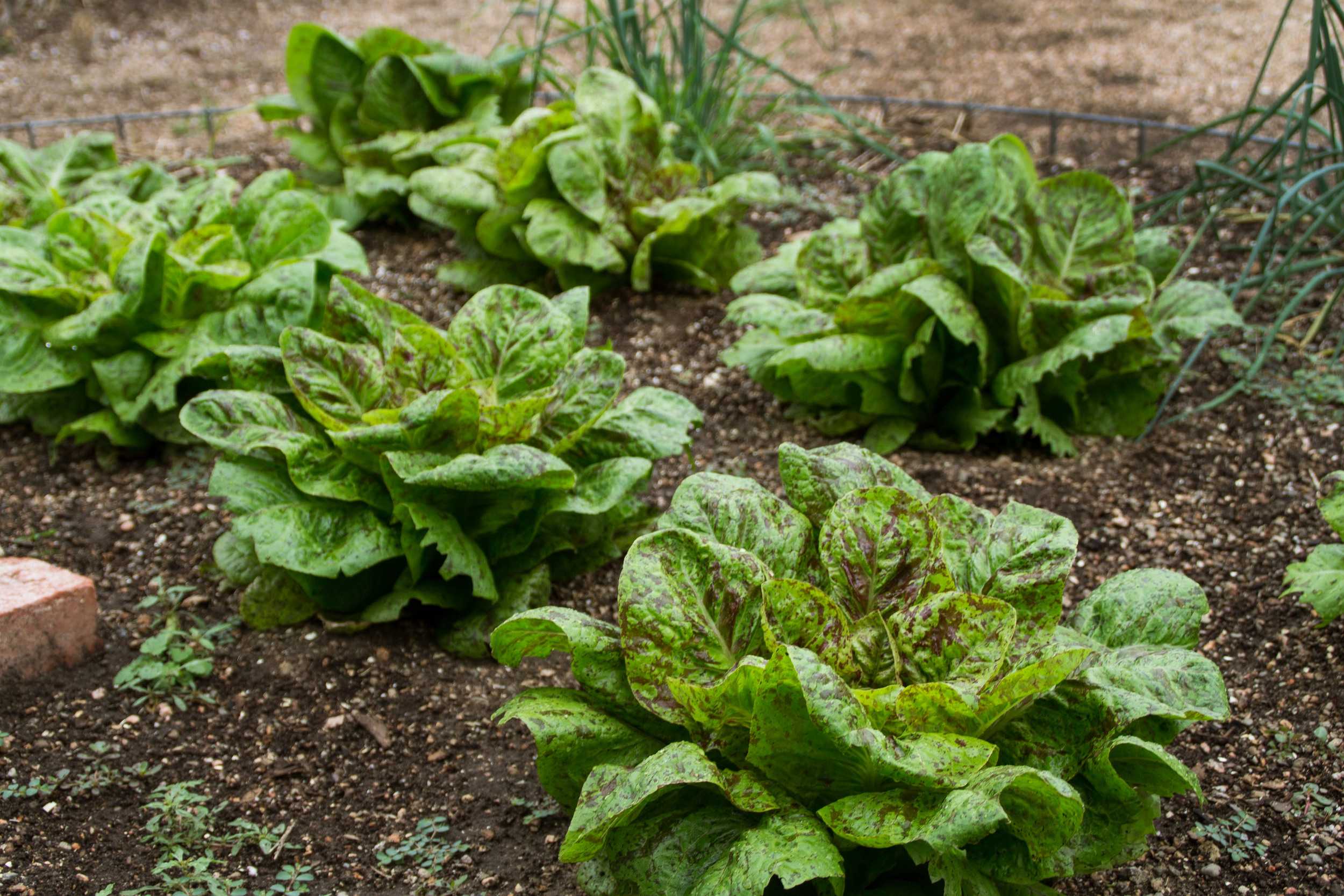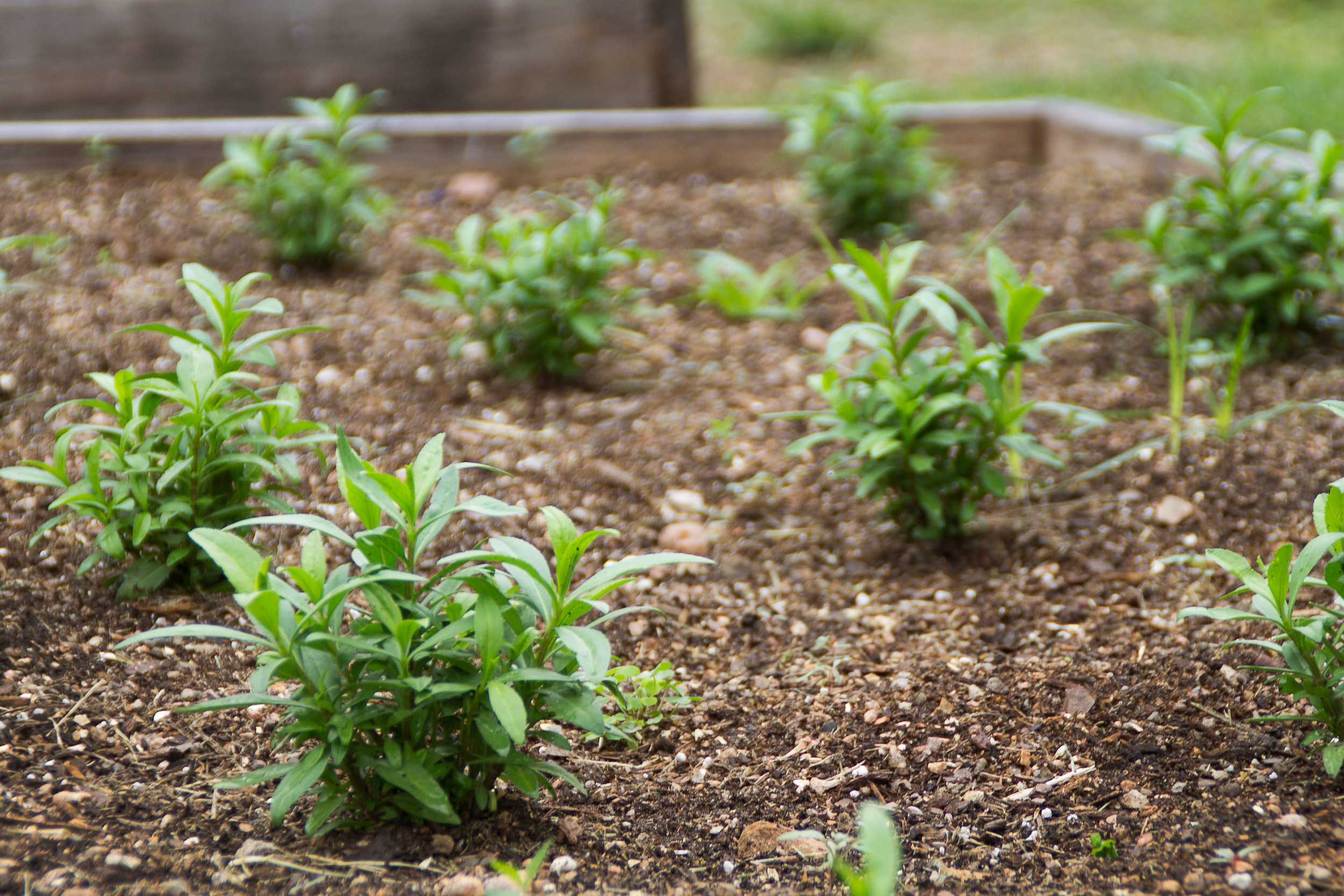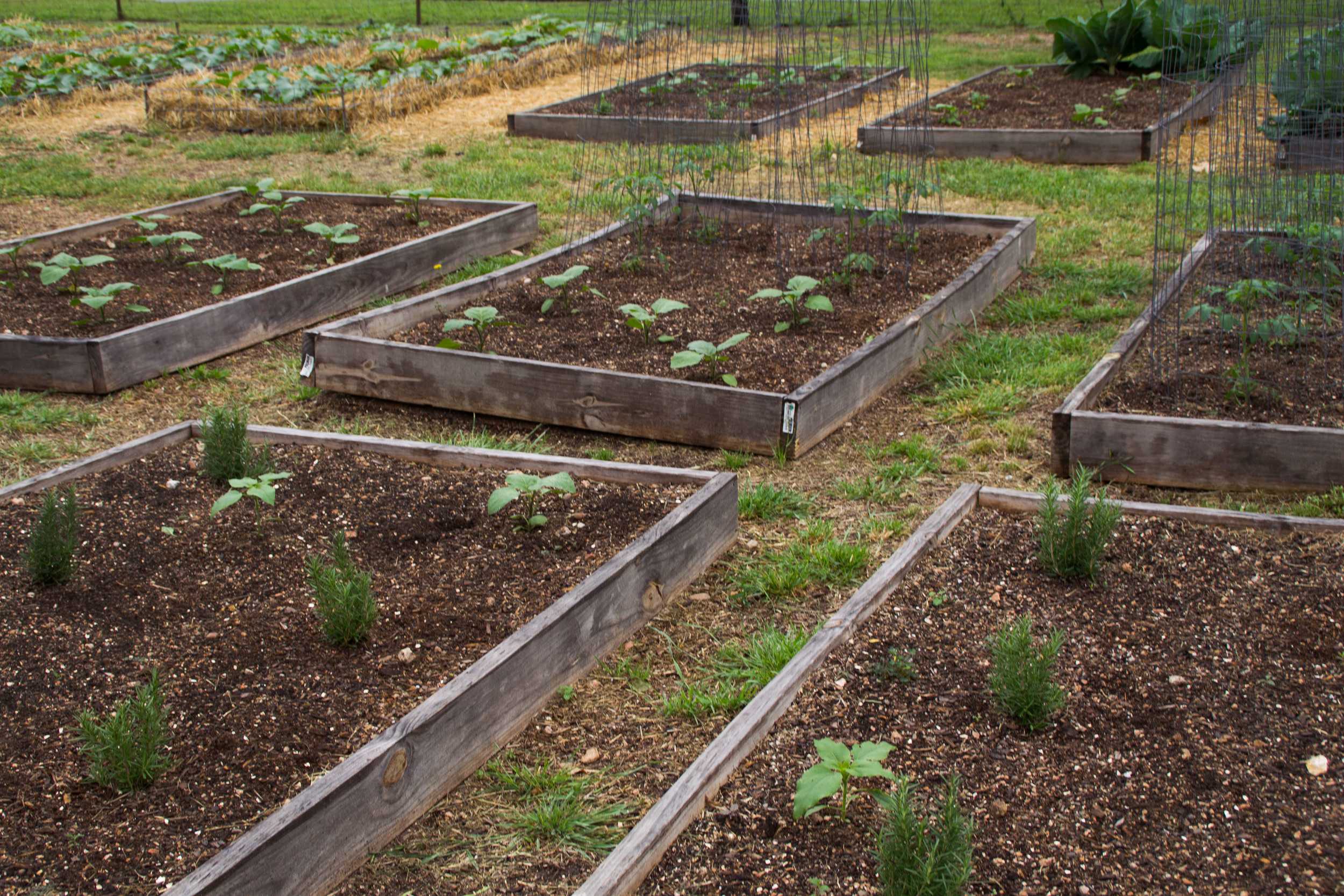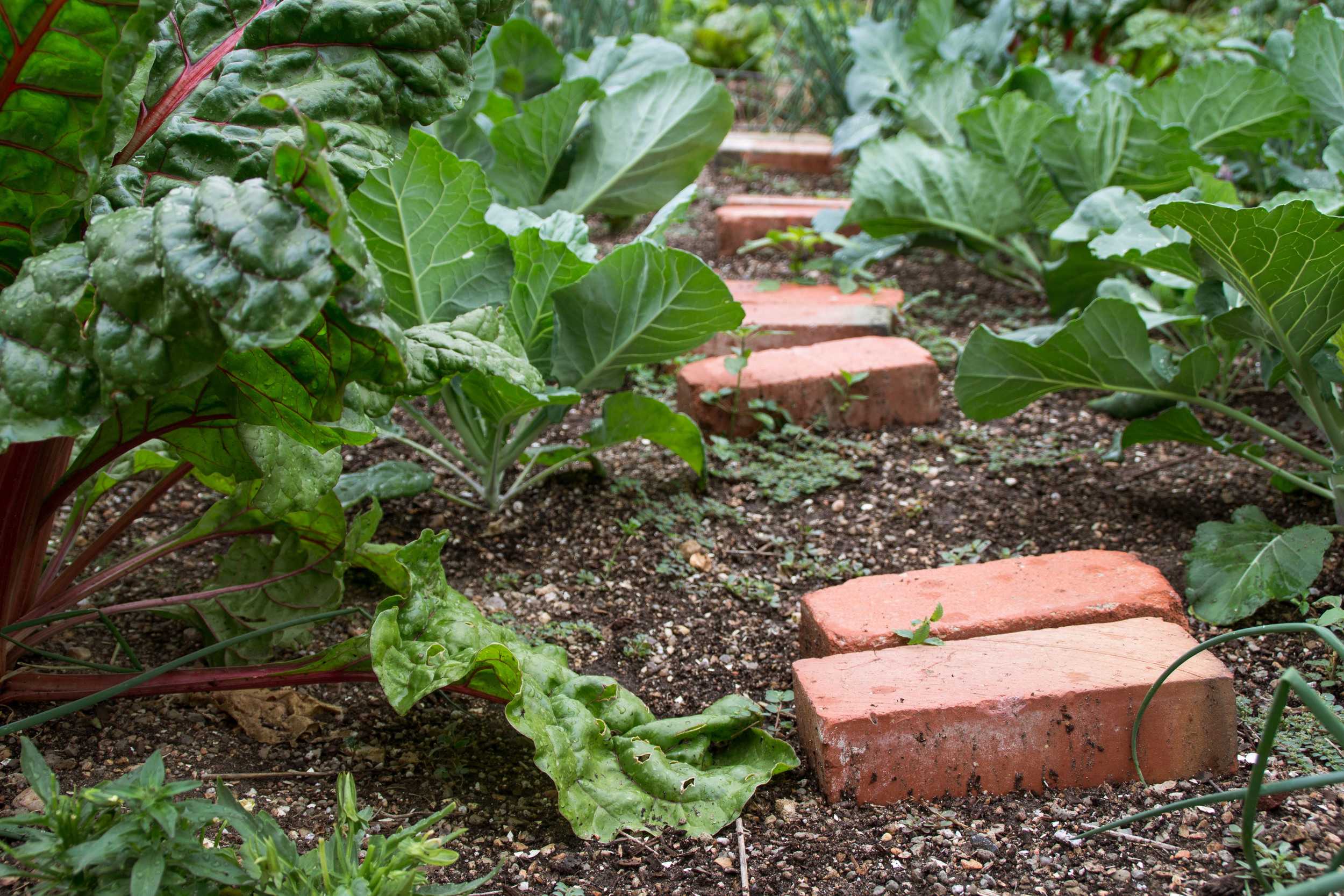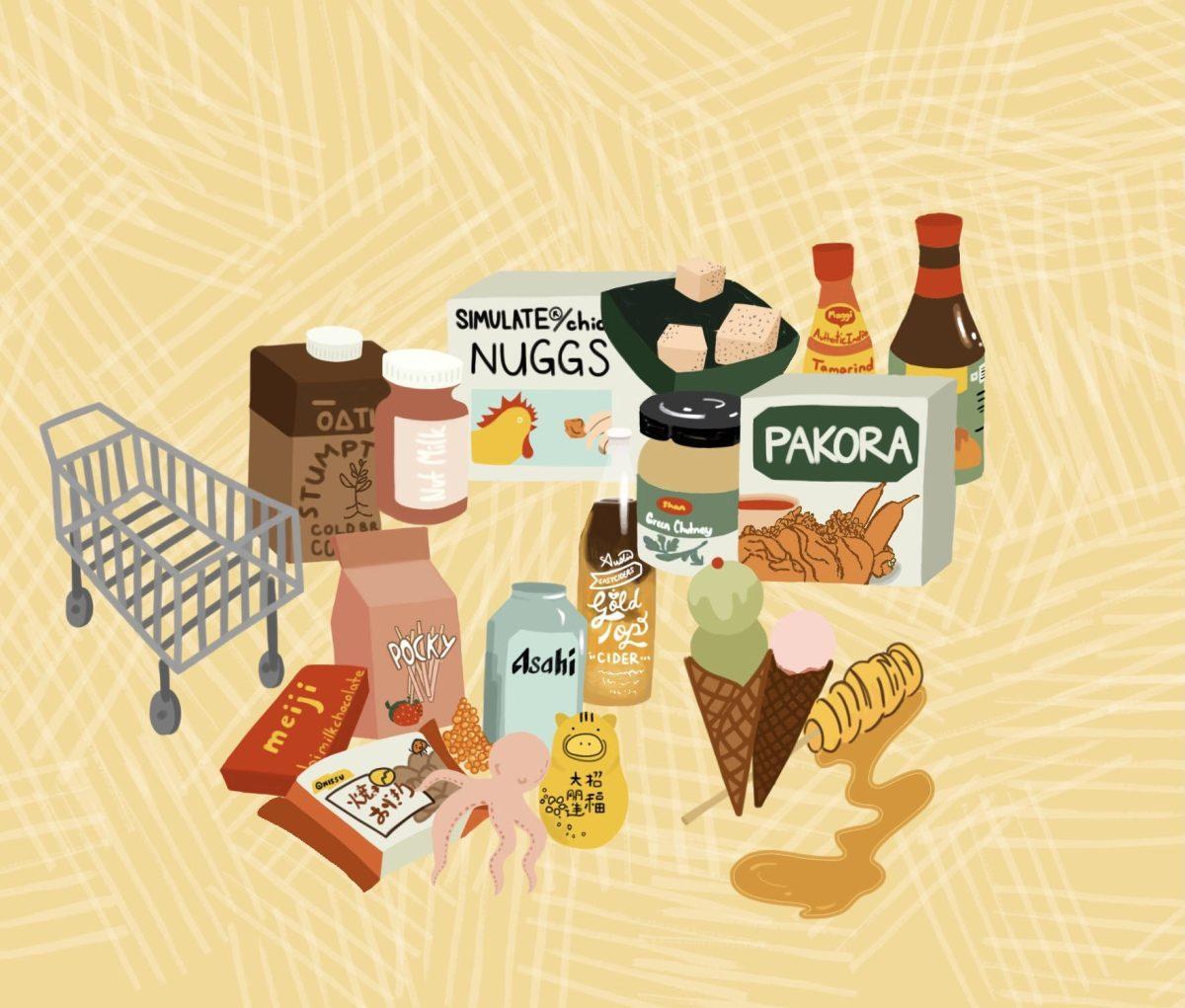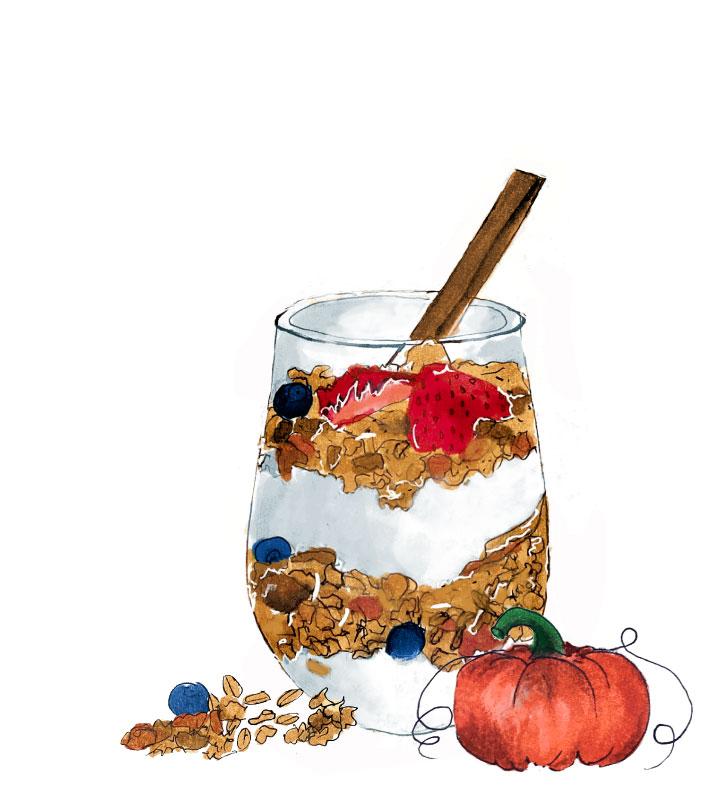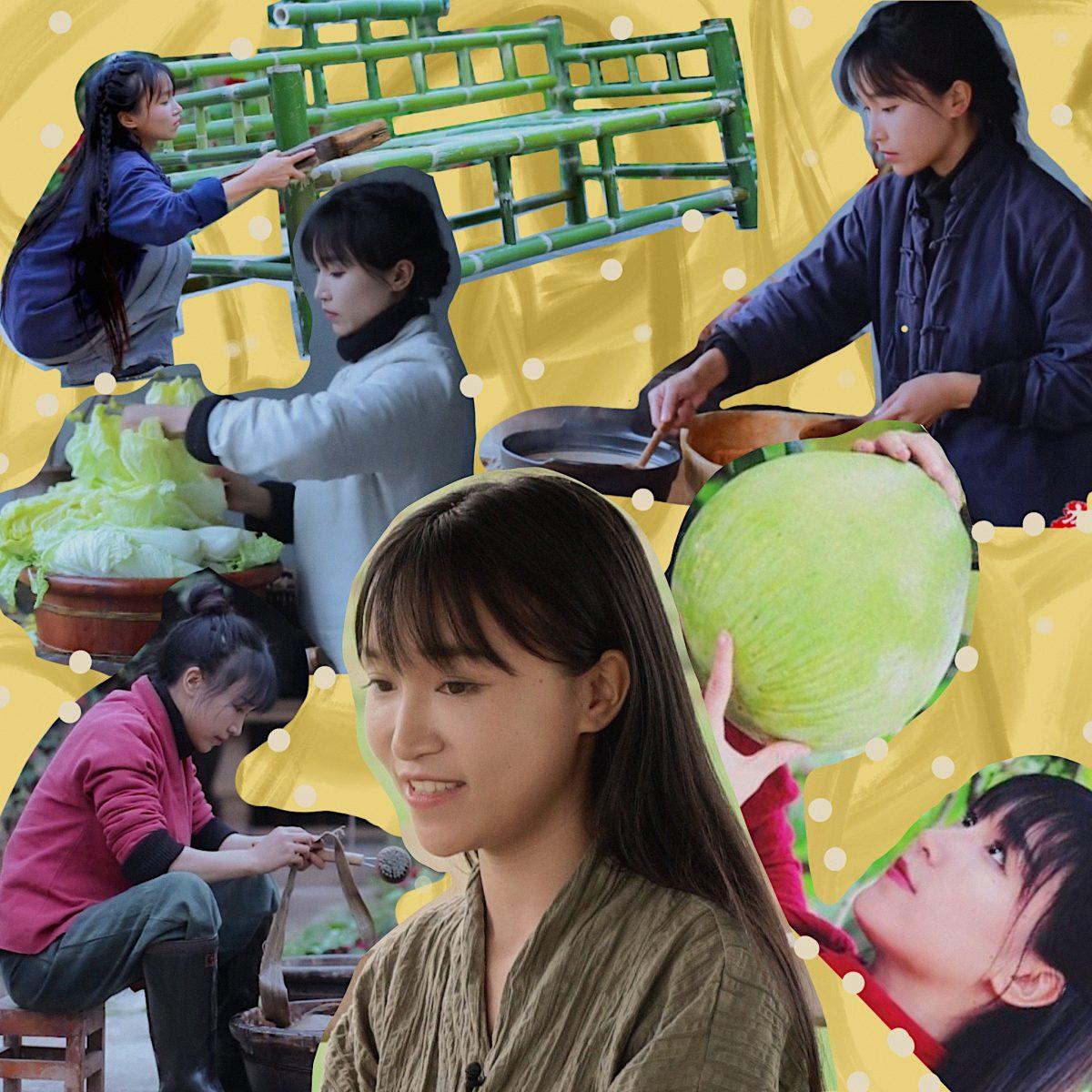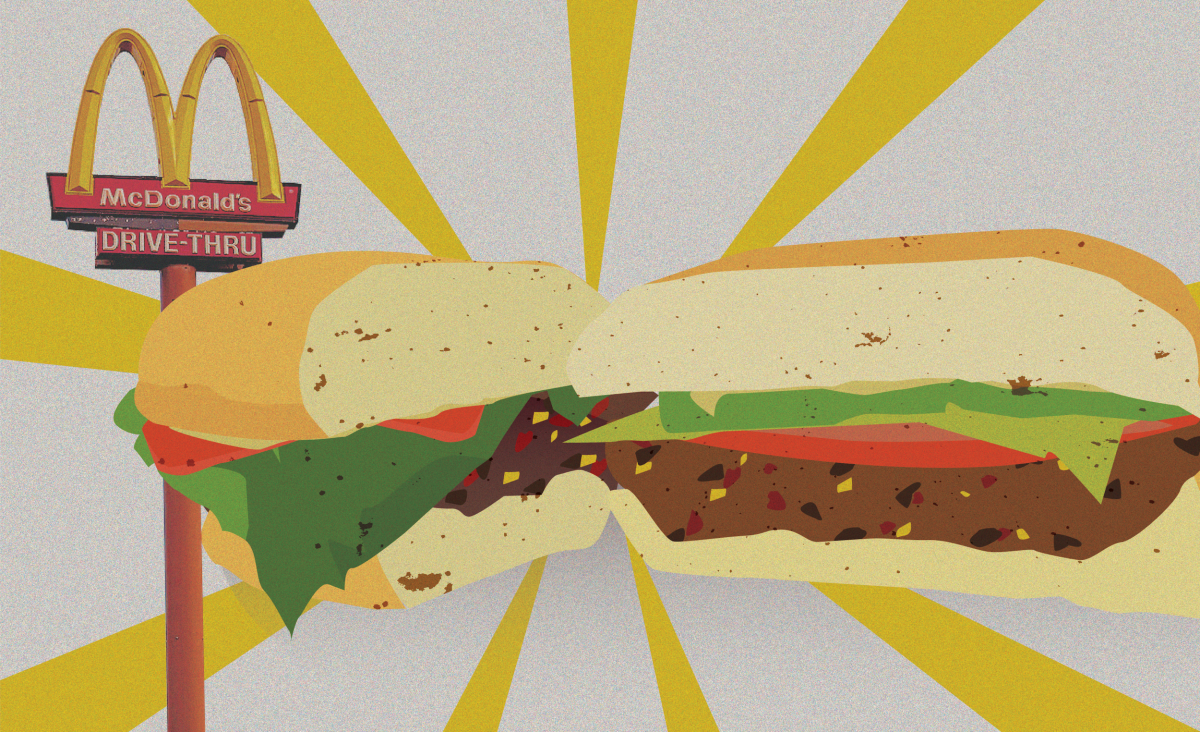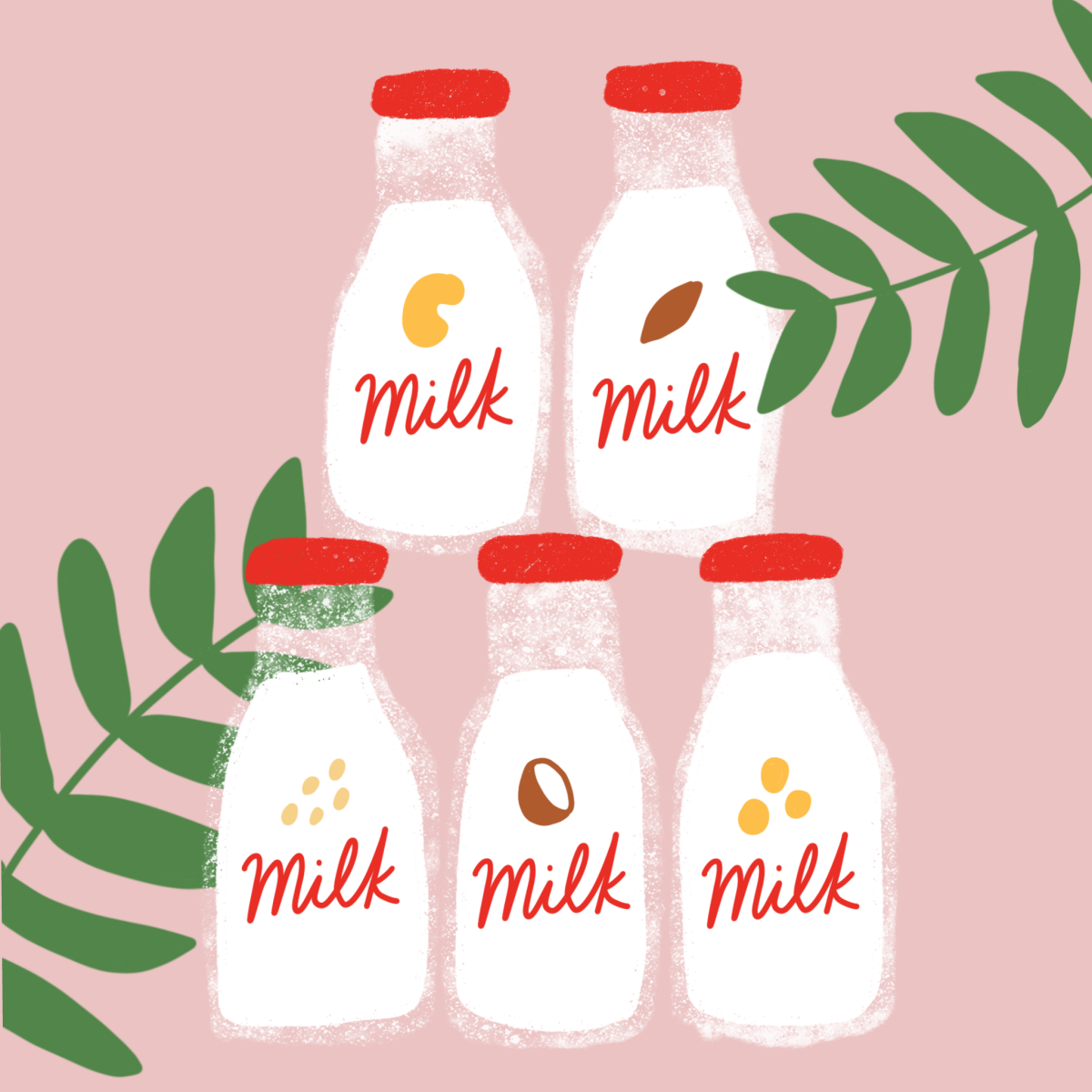Proud chickens strut in their cage, watchfully eyeing the produce planted around them.
Small droplets slide off of the large, fluffed lettuce leaves, cratering the dirt below. Wind swims in-between the clumps of herbs, gently shaking the stems of vegetable stalks. Purple, gold and crimson flowers shrink inwards from the rain, waiting for the clouds to fade so they can bloom again under the warm sun. The nearby chickens keep a watchful eye over the peaceful, quiet garden. It is almost impossible to believe this charming oasis sits in the middle of urban Austin.
By London Gibson
Eastside Cafe, located just off of Manor Road in East Austin, specializes in hearty homestyle meals, utilizing ingredients from their very own garden. “We don’t grow everything we serve, but we serve everything we grow,” says Eastside founder Elaine Martin. When it opened in 1988, Eastside became one of the developers in the movement towards urban-grown food.
Although the garden at Eastside Cafe isn’t able to supply produce for all of the food that Eastside serves, it is able to contribute heavily. Roughly a third of an acre, the garden contains seasonal herbs, vegetables, and even edible flowers. Everything that is grown in the garden eventually makes its way onto a plate at Eastside Cafe and into a happy customer’s stomach.
Eastside Cafe resembles a home in the country, even though it sits in the middle of urban Austin.
The benefits of locally grown food have been gaining public attention recently. Urban farming, however, is much more than a trend. Urban Patchwork, founded in 2009, is an Austin-based company that turns Austin’s unused spaces into local food sources. Paige Oliverio, founder and executive director of Urban Patchwork, asserts that urban farming is a response to real, pressing problems.
Oliverio says that the idea for Urban Patchwork was spurred by the cumulative understanding that the national food system was in trouble and that the solution was right in local cities and neighborhoods. “We needed to teach people that it was possible to grow food in a city,” Oliverio says. In order to offset these issues, Urban Patchwork works with city planners to create a “food infrastructure,” which means making room for food sources when planning out the typical infrastructure of a city.
Oliverio and Urban Patchwork have helped restaurants and communities to turn their underutilized spaces into sources of food. Currently, the business is working on plans for a rooftop farm on a prominent building in Austin. Although Oliverio can’t yet release the name of the location, she can say that growing food closer to home comes with a variety of benefits. “Closer to the food sources, closer to nature,” Oliverio says. Studies have shown that locally grown foods tend to be healthier for the consumer and for the environment.
Clumps of vegetables sit in one of the plots in the community garden at Eastside Cafe.
Locally grown foods tend to be more nutrient-packed and flavorful, according to research done by Dr. Corilee Watters at the University of Hawaii. When big grocery stores like Walmart harvest foods commercially, they have to harvest the produce before their peak ripeness to compensate for the extended transportation time to the grocery store. Local produce, because it is eaten much sooner after it is harvested, is eaten closer to peak ripeness, which preserves the nutrients and flavor in the food.
Eating locally is better for the environment, too. Oliverio says that when commercial food providers transport their food all over the country, they waste packaging, fuel and water. “Large companies wash their food three or four times,” Oliverio says. This excess water carries chemicals from the pesticides and other compounds into the soil, polluting the watersheds around big rivers.
Water might not be the only concern with commercial food providers. According to Renee Cho with the Earth Institute at Columbia University, the fuel needed to transport commercially grown food is “responsible for 5 to 17 times more CO2 than local and regionally produced food.” Decreasing the distance for food to get from the ground to the plate could be one simple contribution to reducing the already monstrous growth of greenhouse gases.
Clumps of vegetables sit in one of the plots in the community garden at Eastside Cafe.
Oliverio believes that the impact locally grown food has on the environment and community makes it worth the work. Even though steep land costs and taxes make city farming more difficult than rural farming, Oliverio says there is a lot of underutilized land and vertical space, such as rooftops and wall structures, in Austin that could be converted into local food sources.
One of the things that inspired Oliverio to start up Urban Patchwork was Hurricane Katrina. “Grocery stores were empty, and outside food sources were cut off, so people just had to leave. Local food production would have provided an alternative source.”
In order to provide said alternative food sources within Austin, students at the University of Texas at Austin have been spreading seeds on campus as well. The UT Microfarm, a student-run on-campus farm, utilizes organic and sustainable practices. Started in 2012, the micro-farm has been selling produce at the HOPE Farmer’s market every Sunday on East 5th Street and Comal Street.
The garden at Eastside Cafe is roughly one third of an acre.
Stephanie Hamborsky, UT senior and former co-director of the UT Microfarm, says that although the environmental impact is important, “the main impact that the Microfarm has is educational.” The UT Microfarm is open to anybody for two workdays a week for any students to come volunteer or simply learn more about the program. “It’s a really potent way for [the students] to experience how food is grown and connect with their food,” Hamborsky says.
The UT Concho Community Garden is also welcome to student involvement. At the community garden, students can own their own plots and grow their own produce. Both organizations aim to promote local, organic eating and sustainable agriculture.
In addition to selling to the HOPE Farmer’s market, the UT Microfarm also sells to a farmers market even closer to home: the UT Farm Stand. The farm stand, new to the university, opened for the first time in February of 2016. So far this semester the UT Farm Stand has held four farm stand days, where attendees can buy fresh, locally grown organic produce and learn about sustainable eating.
Fresh produce is heavily laden with rain drops in the community garden at Eastside Cafe.
Examples of urban farming being initiated by UT, Urban Patchwork, and restaurants like Eastside Cafe have already begun to make an impact on how Austin eats, but there seem to be no signs of stopping. Hamborsky says that she hopes that the UT Microfarm will someday set up a mini greenhouse and a rainwater catching system. Hamborsky says the most important improvement that the microfarm can accomplish is increasing our production so that so that produce can be sold in the dining halls. Increased production would allow the UT Microfarm to take UT even closer to becoming a sustainable campus.
Every small improvement that Hamborsky, Martin, Oliverio, and others like them make affects Austin’s environment and its attitude. According to Oliverio, even though small changes could have a big impact on Austin, the struggle isn’t over. “We often define food access as whether and how much people can pay to buy it,” Olivierio says. We must balance our consumer-based system with empowering people as producers.”































